The fashion industry – from raw fibre to retail store – has been irrevocably challenged by the COVID-19 global pandemic, but true to their creative roots, fashion designers are finding ways to innovate.
When the first cases of an unknown virus were reported in Wuhan, China, in December 2019, Chinese-born fashion designer Angel Chen was circumspect, yet continued with a business-as-usual outlook. “At first I didn't realise the reach and importance,” says the woman behind her namesake brand Angel Chen. But as cases continued to mount, the London-based technical outerwear designer raised in China’s rural Fujian province swiftly realised her homeland - and her company - was at risk like never before from what would become identified as COVID-19, or the novel Coronavirus.
“My thoughts moved fast and I envisioned all the side effects on my business.”
“When it suddenly started to spread incredibly fast, to the extent that it was impossible not to be aware of the seriousness of the situation, I immediately thought about the disruption caused to production, as all factories closed down until further notice,” says Chen. “Soon after, my show at Milan Fashion Week was cancelled, I found myself unable to travel freely, Shanghai Fashion Week was cancelled and so forth. So, from the moment I realised the impact of the virus, my thoughts moved fast and I envisioned all the side effects on my business.”
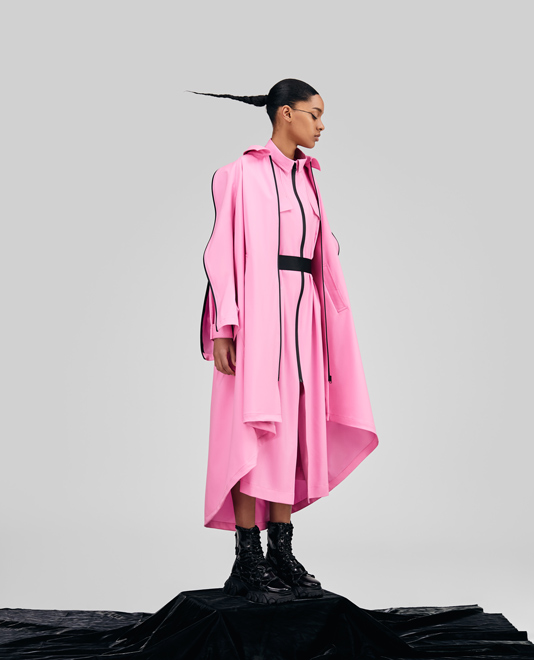
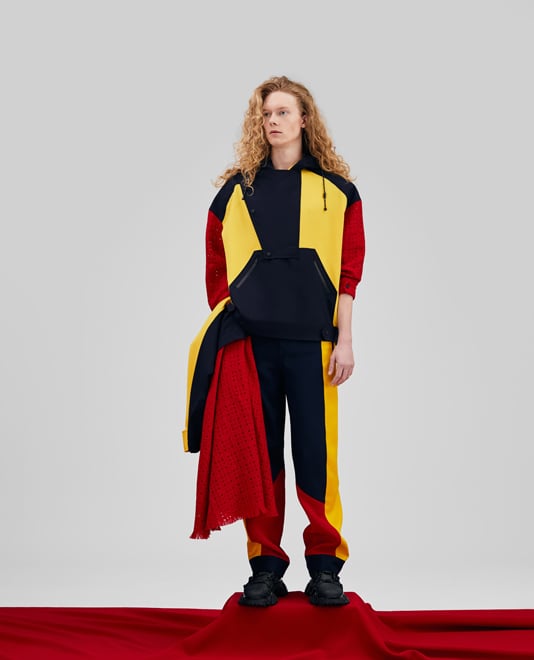
Merino wool looks from Angel Chen’s International Woolmark Prize collection
By the time the Coronavirus was recognised as a pandemic by the World Health Organisation on March 11, designers across the world were feeling its impact - profoundly. “We realised [the impact] at the beginning of January when getting some of our spring production out before Chinese New Year was becoming an issue,” says Colovos co-founder Nicole Colovos. “We watched how quickly it was moving and the impact it had on mainland China and we were concerned that we would lose half of our spring production. I did not imagine then what we are seeing now.”
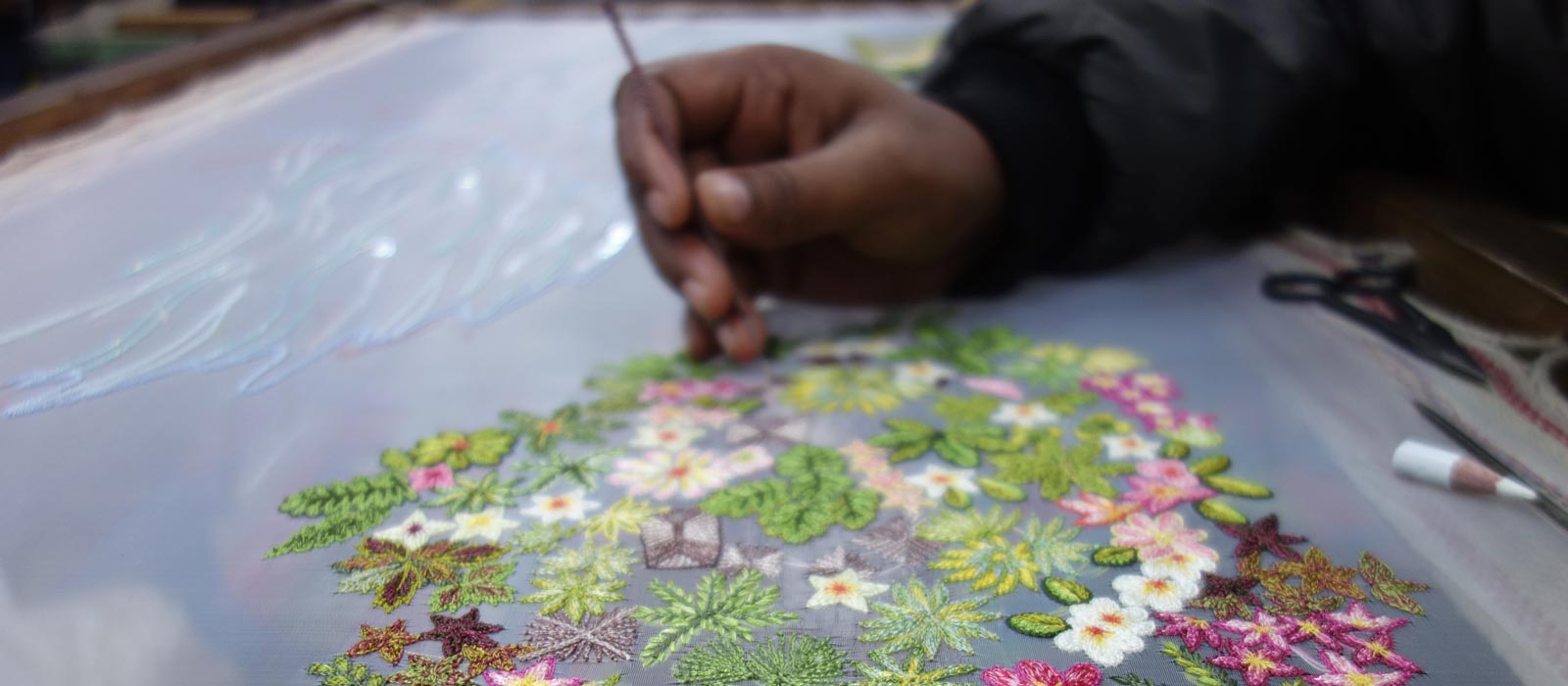
The impact of the virus for Indian designer Rahul Mishra began with his autumn/winter 2020 prêt-à-porter presentation in February at Paris Fashion Week, where he was unable to physically meet most of his regular buyers from China, Japan and Korea due to the travel restrictions in those countries. “While the collection saw a lot of interest, most orders had to be put on hold due to a halt in the market,” says Mishra. “As global retail was soaked in the collective sentiment, the Indian consumer also began to withdraw until we saw a rise in confirmed cases in India, and that’s when we had to shut down all our retail stores and the atelier.”
A CHALLENGING TIME FOR FASHION BUSINESS
What we are seeing now in relation to the fashion industry is a decimation ranging from laid-off factory workers, photographers, hair and makeup artists to cancelled fashion weeks and runway shows and the shuttering of retail and designer businesses across the globe. While behemoth brands may be better equipped to weather the storm, thanks to economies of scale and deeper pockets, it is the smaller independent designers that are particularly at risk due to the virus that has spread to nearly every country in the world and so far claimed more than 30,000 lives. Without the financial cushion that is needed to ride the length of time their companies will be significantly affected or closed altogether, they are being forced to revaluate their business models and innovate like never before in order to have a shot at survival.
“Larger companies will most likely have much larger resources at their disposal which undoubtedly helps in unprecedented times like these. Many smaller independent brands may not have that kind of power or resources behind them, therefore the fear is they may not survive a time like this.”
According to Colovos, the immediacy of the impact for independent designers has been swift and significant. “There is loss of business for everyone: loss of jobs, freelance and hourly workers in particular, and small retail boutiques that depend on foot traffic are suddenly closing down and laying off their employees. Smaller designers are the first to have their budgets cut as they do not have the advertising support and customer reach of the bigger brands; online sales have slowed and stores will have to cancel upcoming orders if they are hurting for too long. We may be left with the inventory if we produce it.”
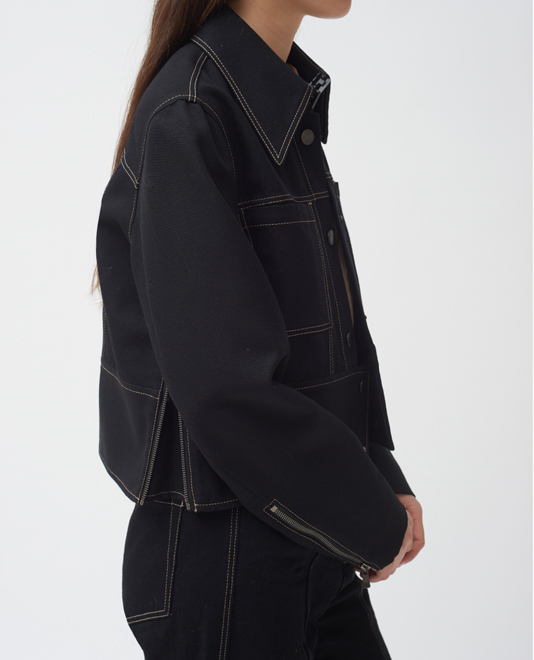
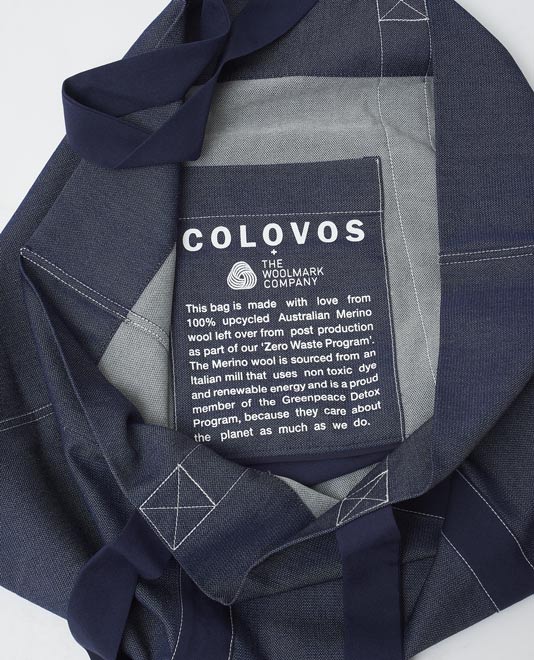
Colovos 100% Merino wool jacket and upcycled bag by Colovos.
While the big brands can rely to some extent on decades-long relationships with behemoth retailers, independent designers have a more tenuous relationship with smaller stockists who may not be able to support them as the pandemic continues. “Stores know people want big brands, but smaller designers have to prove this season after season,” says British designer Edward Crutchley.
Add to this the universal issue of relevance that is facing the fashion industry as a whole, and independent designers are facing the perfect storm. “In times of uncertainty people view fashion as a luxury not a necessity and that feeling may stay true for a while as we do not have an end in sight yet,” says Colovos. Carlucci concurs, adding: “Fashion for the most part falls under ‘non-essential’, so therefore during a pandemic you have to wonder who will be buying your product - your audience automatically shrinks.”
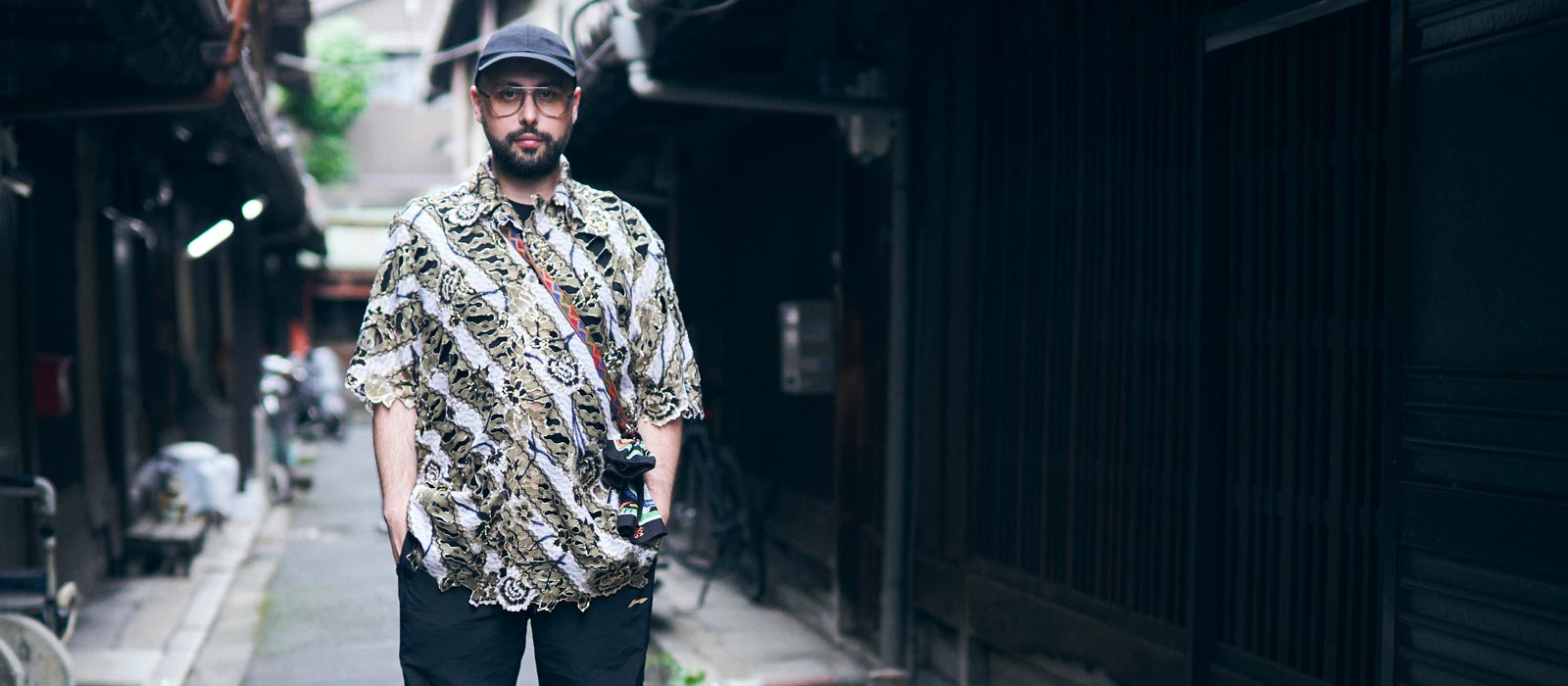
WAYS TO SUPPORT CREATIVITY
As we attempt to imagine what the fashion industry will look like when the pandemic abates, it is independent designers who must be its beating heart. As the source of new ideas and design directions and the rising talents who will ultimately succeed the world’s best-known creative directors at top fashion houses across the globe, it is imperative we continue to support them in order to ensure the future of the fashion industry as a whole.
“Consumers can support independent designers by purchasing items from the brands own websites, and tagging and sharing items from your favourite brand on your Instagram will help create a wider reach to introduce it to new customers.”
And the good news is that when it comes to the question of what we, as consumers, can do to support them. The answer is actually a lot. From making strategic yet considered purchases direct from designers’ own websites and taking advantage of special offers and free shipping, to championing your favourite brands on social media and sharing your positive feedback with retailers, there are myriad ways to show your support for the industry’s top niche creators. Plus, given social distancing and isolation, you have the best reason in the world to shop and engage online.
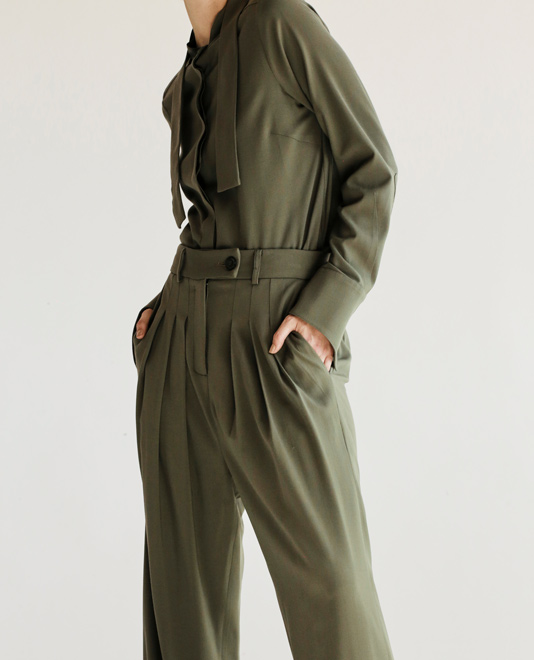
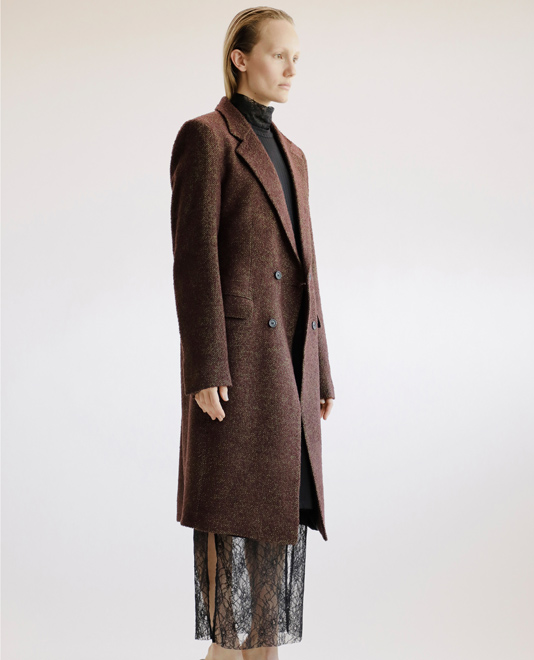
Strateas Carlucci wool-rich spring 2020 looks.
“Consumers can support independent designers by purchasing items from the brands own websites, and tagging and sharing items from your favourite brand on your Instagram will help create a wider reach to introduce it to new customers,” says Colovos. Both Colovos and Strateas Carlucci offer free shipping, with the former introducing a lay-by payment option and the latter offering 20% off all new stock on its website and a new After-pay option to allow for any easier payment plan. “We are suggesting consumers take advantage of the offers and discounted stock, and perhaps get in early for things like birthday and other gifts,” says Carlucci.
INNOVATING IN THE DIGITAL SPACE
Carlucci readily admits some consumers may not be in a position to spend during this challenging time, so suggests alternative ways to help spread the word. “Not everyone will be in a position financially to be able to part with much-needed cash during this crisis and the other way to help is just as important, which is by spreading the word about independent designers,” he says. “You can post images on social media with direct links to the designers’ website or social media channels, which you can ask friends and colleagues to share and support.”
“It gives me immense pleasure to see our customers repost for us to help us survive through this situation.”
Chen recently launched the #dragonprincess campaign to spread awareness about her brand and says she has been heartened by consumers’ willingness to embrace the hashtag to promote Angel Chen across multiple platforms. “With the world taking safety measures, I realised that social media and e-commerce has become vital in our customer’s life,” she says. “It gives me immense pleasure to see our customers repost for us to help us survive through this situation.”
Customers can also log-on to send a digital message to retailers expressing positive feedback about their preferred fashion labels. “Of course everyone has to think carefully about what they are spending but even an email or an Instagram comment to stores saying how much you appreciate what we do can go a long, long way,” says Crutchley.
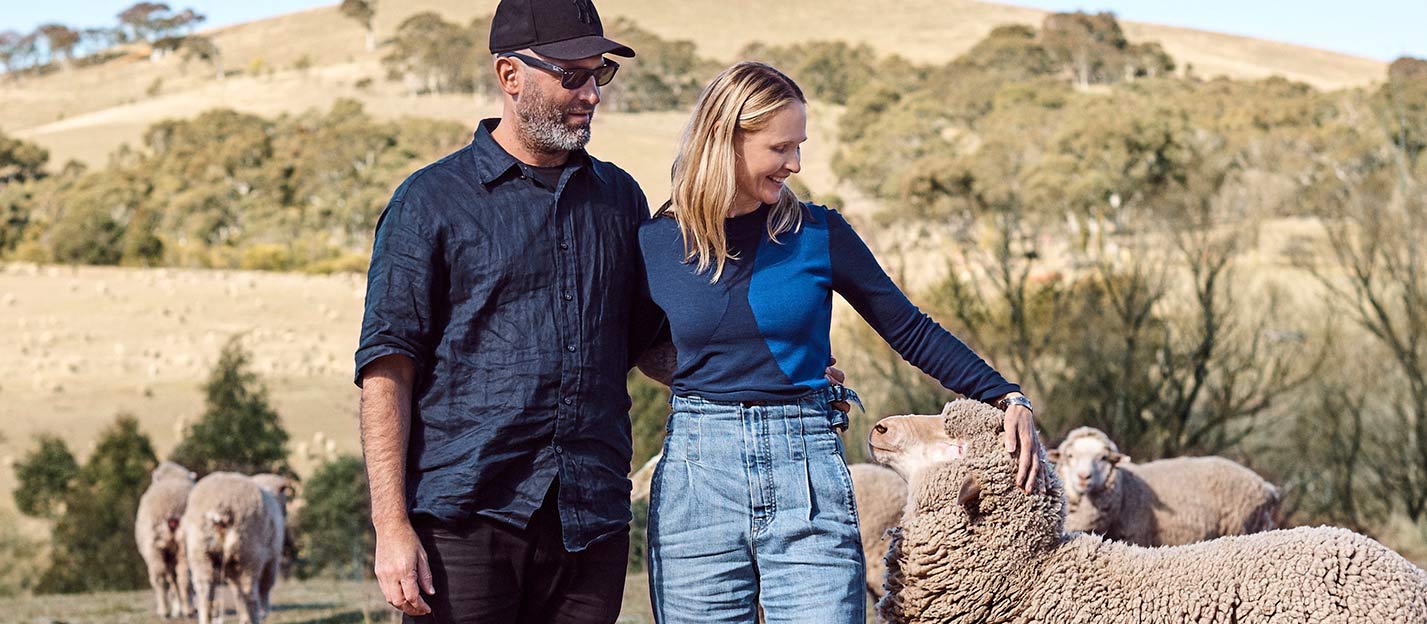
Strateas Carlucci has created a ‘Micro-Art’ Series, which comes in the form of a complimentary limited-run print sent out with orders, and is offering one-on-one in-studio appointments. In lieu of physical appointments, the brand is also conducting face-time appointments to take clients through the collection then ship out items for them to try and return if not right. “Our main focus is customer support and ease,” says Carlucci. “We want to ensure and encourage people that we are still open for business, and we are grateful for everyone’s support.”
Crutchley is also working in the design room to give consumers greater access and information about his designs, with a view to making them feel a part of his brand narrative.
“I’m trying to find ways to bring people more into my process, sharing inspirations and sketches and showing them how I work and inviting them to be part of the narrative,” he says. Chen is working to the same end in the digital space. “We started to do live streaming recently to approach our customers from a digital end instead of the traditional offline retail approach and we also have an online community on WeChat supporting our brand,” she says. In fact, Shanghai Fashion Week moved its entire operation online, in partnership with Alibaba’s Tmall, live streaming the new collections of some 150 designers for buyers, press and consumers.
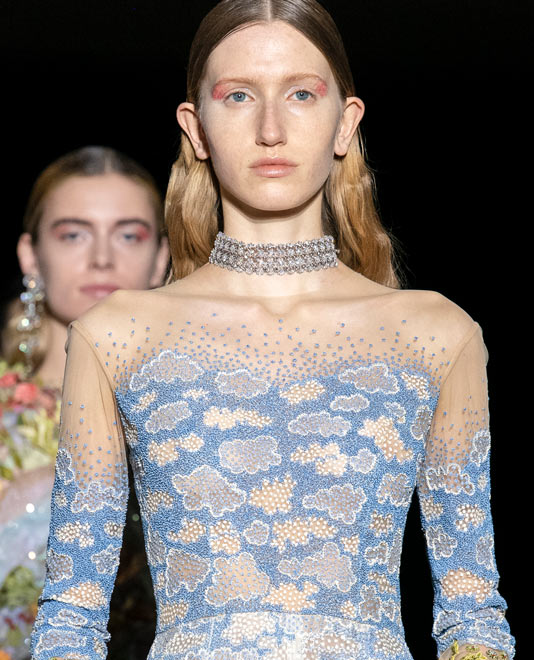
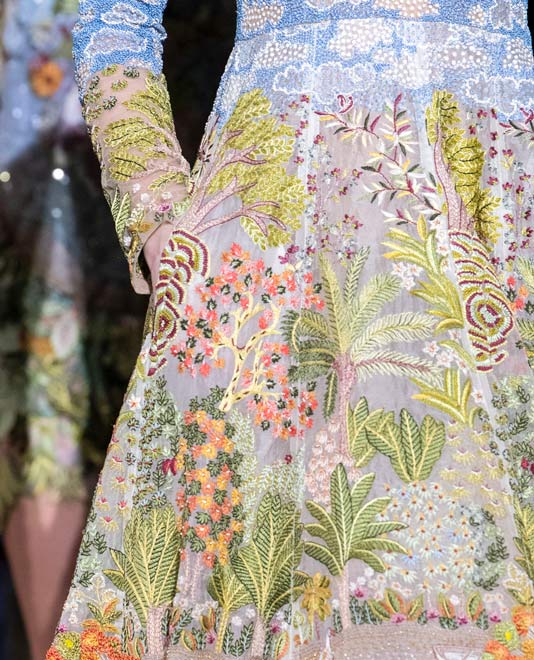
Looks from Rahul Mishra’s spring 2020 couture collection, shown at Paris Fashion Week.
For Rahul Mishra, who works with local artisans and craftspeople in his country, piquing consumers’ interest in his label is about telling that story. “We are trying to remind our customers of how fashion may not be a core necessity for them right now but it helps sustain the lives of hundreds of craftspeople that work in fashion and their families,” says Mishra. “It’s not the time for clever marketing but rather organic storytelling that naturally connects you with the world on a human level.”
THE HUMAN ELEMENT OF FASHION
In times of need designers are also coming together to support the virus effort through the manufacturing of masks and donations to charity. Self-isolating fashion students in Prague from Umprum Academy of Art, Architecture and Design Instagrammed are themselves sewing masks, heeding a call from Czech Republic local authorities for more of them, while in Britain, where the British Fashion Council recently launched a call-out for brands to help the government manufacture essential products, designers Phoebe English and Jackie Lee (behind the brand J. JS Lee) are among those making masks. “It was a natural step for me to start thinking about what I could do using my skills as a fashion designer,” Jackie Lee wrote on Instagram. “I went for the obvious choice as a designer to make masks out of dead stock fabric and provide them to the most vulnerable.”
“Smaller, independent companies like our own are able to be more reactive and more malleable than bigger brands, so we can act fast and implement new procedures and strategies almost instantly.”
In the United States, Colovos donated 20% of online to sales for a fortnight to One Fair Wage, an emergency service worker support fund, as part of fashion’s global effort to rally to the cause. “By shopping with us you will also be supporting others who have been immediately impacted,” Colovos wrote on Instagram. The fashion industry is often criticised for being self-serving, but right now independent designers are adapting to come up with solutions that better cater to the customer and to society in general in order to ensure their survival. “Smaller, independent companies like our own are able to be more reactive and more malleable than bigger brands, so we can act fast and implement new procedures and strategies almost instantly,” says Carlucci.
Promoting ethical fashion and sustainability is a key part of Mishra’s strategy moving forward. “Fashion that is based on values of authenticity and pure craft is going to survive and the kind that seeks to only force consumption and infinite sales may need redefinition,” says the designer. “The consumer will be looking to make more mindful purchases and the market should be less dependent on trends and only on the clothing that can sustain someone’s wardrobe for years to come.”
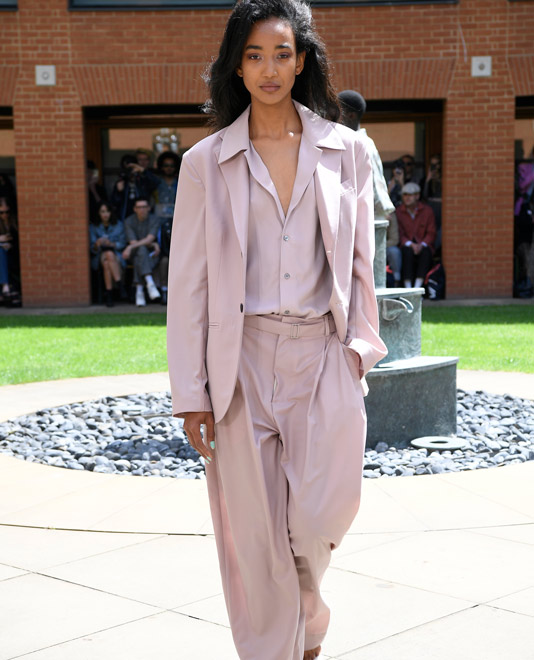
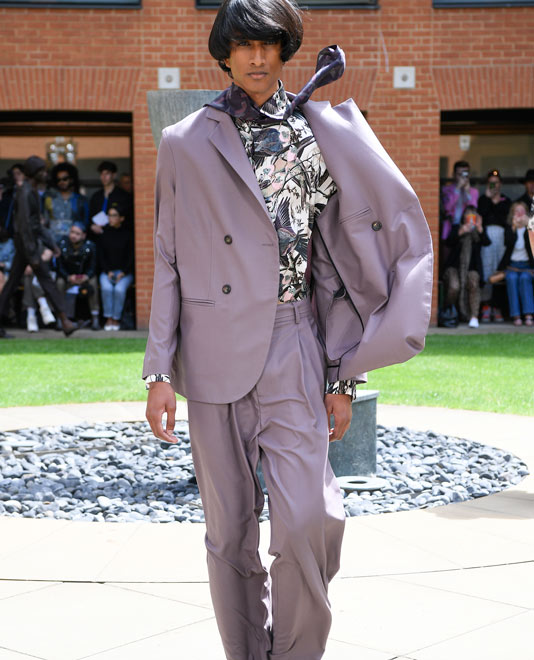
Edward Crutchley Merino wool looks from the designer’s spring 2020 collection.
“Rather than panicking I’m trying to make the most of this bizarre time and find a new and exciting way to progress,” says Crutchley. “We have to explore all the options and keep assessing things as we move forward.” Chen agrees, adding: “This crisis is obliging the sector to re-think itself at different levels and to face a need for genuine innovation.”
WHAT CAN DESIGNERS DO?
-
GET IN TOUCH
We recognise the difficulty of this situation for everyone across the supply chain, and we’re here to help. Our contact books remain open and we have an extensive network across the global industry that we can connect you with. Our in-house technical team is also here to support you on any production issues or to explore new fibre or manufacturing innovations. -
TAKE TIME OUT FOR TRAINING AND EDUCATION
Our Woolmark Learning Centre offers free step-by-step pathways for the professional development of those working in your business with multiple log ins available. From a fundamentals course to gaining in-depth knowledge of the processing pipeline and hearing from industry experts. -
DIGITISE AND INNOVATE
Shanghai Fashion Week just took its entire event online, and many are following. If you don’t have the resources to stage a digital fashion collection preview, look at new ways that you can bring customers into your world - simply filming your work process, like Edward Crutchley suggests, helps to show the world what you’re about, as well as demonstrate the personal, haptic nature of independent fashion businesses. -
TAKE CARE OF YOUR MENTAL AND PHYSICAL HEALTH
Fashion is an intense, non-stop business, and rarely is there a chance to take a break. Make time for yourself and reflect on new and creative ways to move your business forward in what will be an incredibly different retail landscape post-crisis.
WHAT CAN CUSTOMERS DO?
-
SHARE YOUR LOVE FOR YOUR FAVOURITE DESIGNERS
By sharing their collections and their ethos with your audience on social media, or by re-posting images, you are helping to widen their audience, and their potential customer reach. -
TAKE ADVANTAGE OF SPECIALS
If you are in the financial position to make purchases, many designers are offering incredible discounts, as well as free shipping. Plan ahead for birthday gifts to save time and money down the track. -
MAKE INCREMENTAL PURCHASES
Many designers have introduced lay-away schemes or teamed up with companies like Afterpay, meaning you can pay off – or pay later – for your purchases. -
MAKE CONSCIOUS DECISIONS
Now, more than ever, is the time to reassess our relationship with consumption. What are the kinds of brands you want to support? Many independent designers, including those featured in this article, manufacture in small quantities, employing local artisans and using natural fabrics, eschewing mass produced, synthetic clothing with high quality, long-lasting garments that will live forever.